At the Centre for Industrial Rheology, we are a specialised rheological testing lab that offers characterisation services for dermal fillers. Equipped with a suite of high-performance research rheometers, we are able to provide rapid access to specialised material insights.
Key methods related to dermal filler characterisation include:
- Oscillatory testing, to quantify viscoelastic properties such as storage (G’) and loss modulus (G”) across a wide range of frequencies and stresses.
- Steady shear testing, to assess viscosity under various shear rates.
These techniques provide a comprehensive understanding of how fillers behave under different conditions, supporting both formulation development and quality control.
Introduction to Dermal Fillers
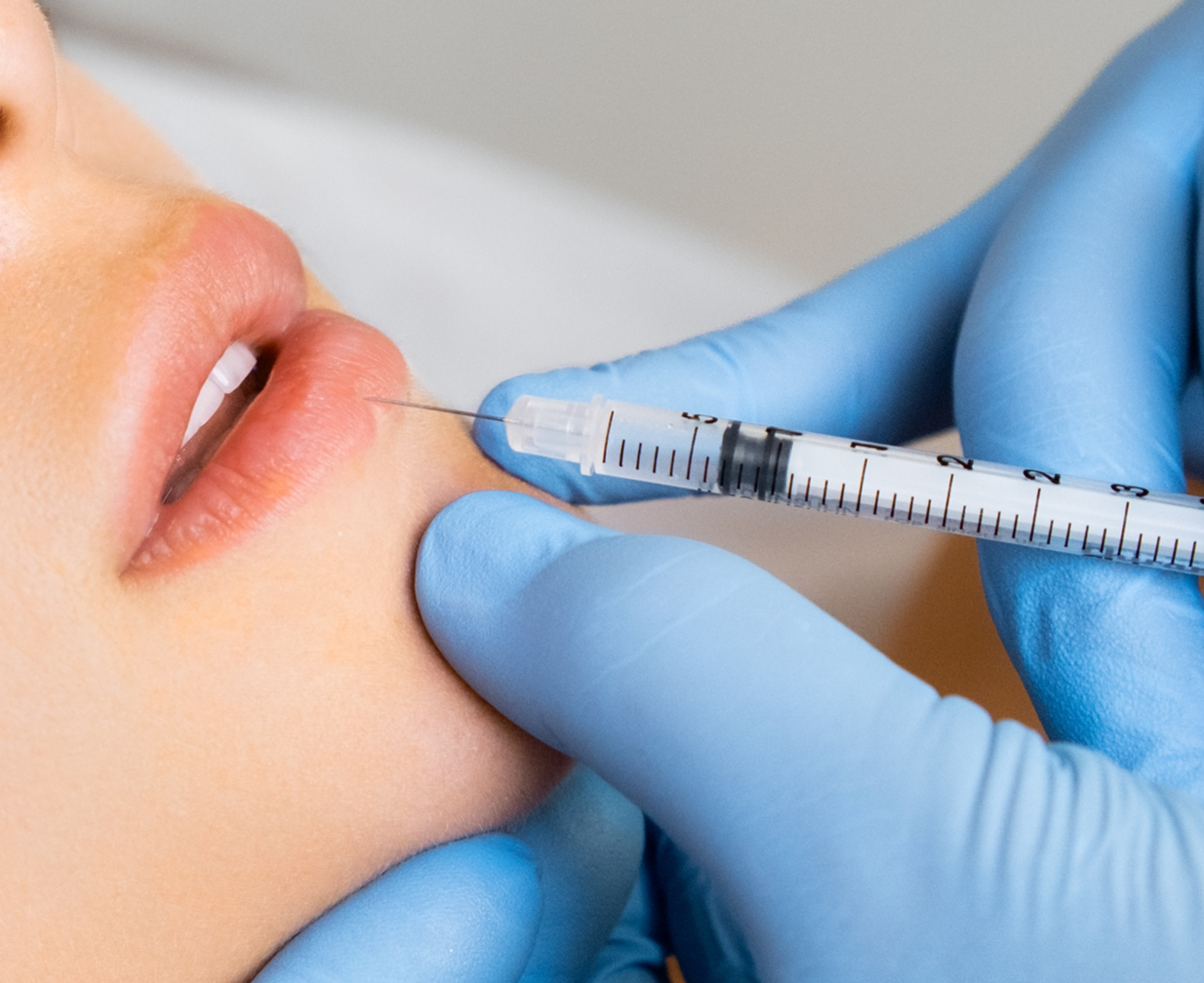
Dermal fillers are commonly used in aesthetic treatments to enhance facial contours, smooth wrinkles, and restore any lost volume. They are typically injected in areas such as the cheeks, nose, and lips.
A dermal filler is subjected to a range of shearing, compression, and stretching forces imparted upon it by muscle movement, external pressure, and gravity. It also experiences high shear forces while being pushed through the tip of the needle.
Cohesion and crosslinking influence how the filler behaves when subjected to these forces; however, these properties are challenging to measure directly. Rheological characterisation provides a precise and quantitative approach to evaluating these essential viscoelastic properties. By thoroughly assessing a filler’s rheological behaviour, performance can be predicted, and formulations can be refined.
If you would like to discuss dermal filler characterisation
Viscoelasticity of Dermal Fillers – Rotational Oscillation Testing
Materials can react to force viscously like a liquid, or elastically like a solid. Dermal fillers display a combination of the two, representing a viscoelastic material. Viscoelasticity can be captured through oscillatory rheological testing. A rheometer gently probes the material, wobbling it back and forth, looking for delicate structure that is not detected by traditional viscometer testing.
A key oscillatory test used for dermal fillers is a frequency sweep. In this test, the material is gently deformed back and forth, starting slowly and then gradually increasing in speed.
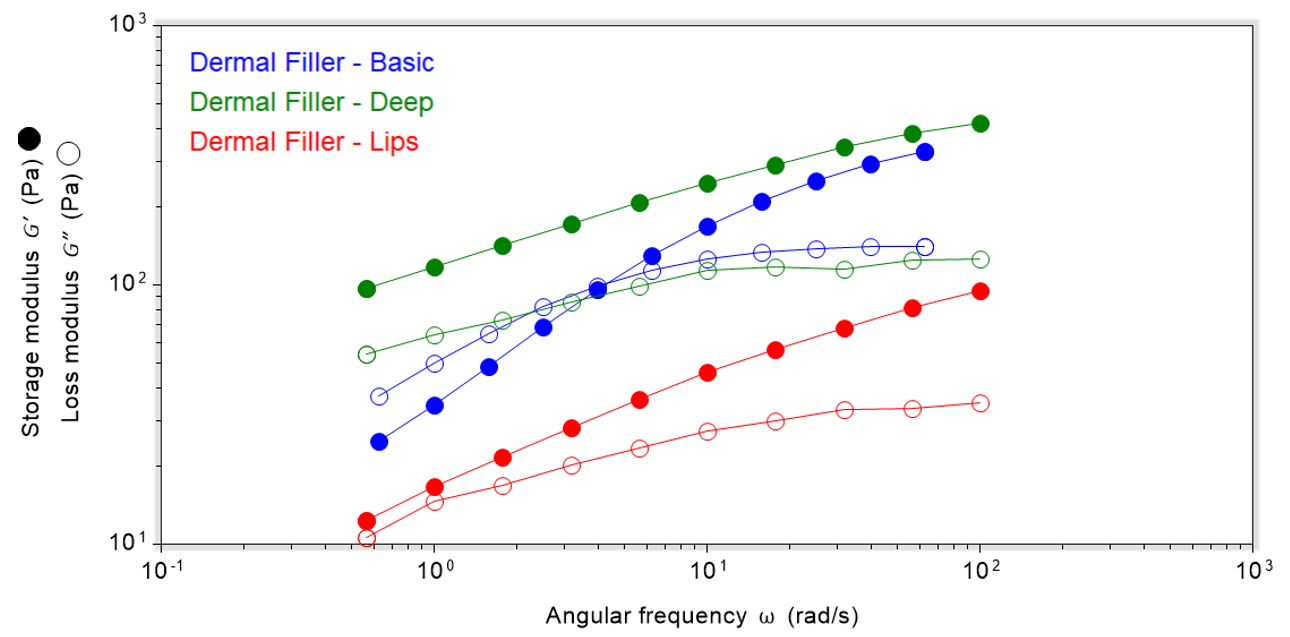
Figure 2 illustrates an oscillatory frequency sweep conducted for dermal fillers formulated for different injection depths. Key rheological parameters measured are the storage modulus (G’), representing the elastic (solid-like) response, and the loss modulus (G’’), representing the viscous (liquid-like) response. Significant differences in their rheological profiles can be observed.
The deep filler exhibits pronounced elastic dominance throughout the frequency range tested. This indicates that this filler behaves the most like a solid compared to the other samples. This elastic dominance may be beneficial for its application for deep tissue placement, providing stronger structural support.
The lip filler similarly displays elastic-dominant behaviour across the frequency range tested, but with modulus values approximately one order of magnitude lower than those of the deep filler. This lower elasticity may support better conformity to natural lip movement and may be more compatible with the lips’ softer tissue, in contrast to deeper areas that require greater structural support.
The basic filler exhibits the most unique rheological behaviour among the samples tested. This filler exhibits viscous dominance at low frequencies, suggesting that this formulation behaves more like a liquid when subjected to slower deformations. However, once the frequency is increased, a crossover frequency can be observed, where storage modulus overtakes loss modulus, marking a transition to elastic dominance under faster deformations.
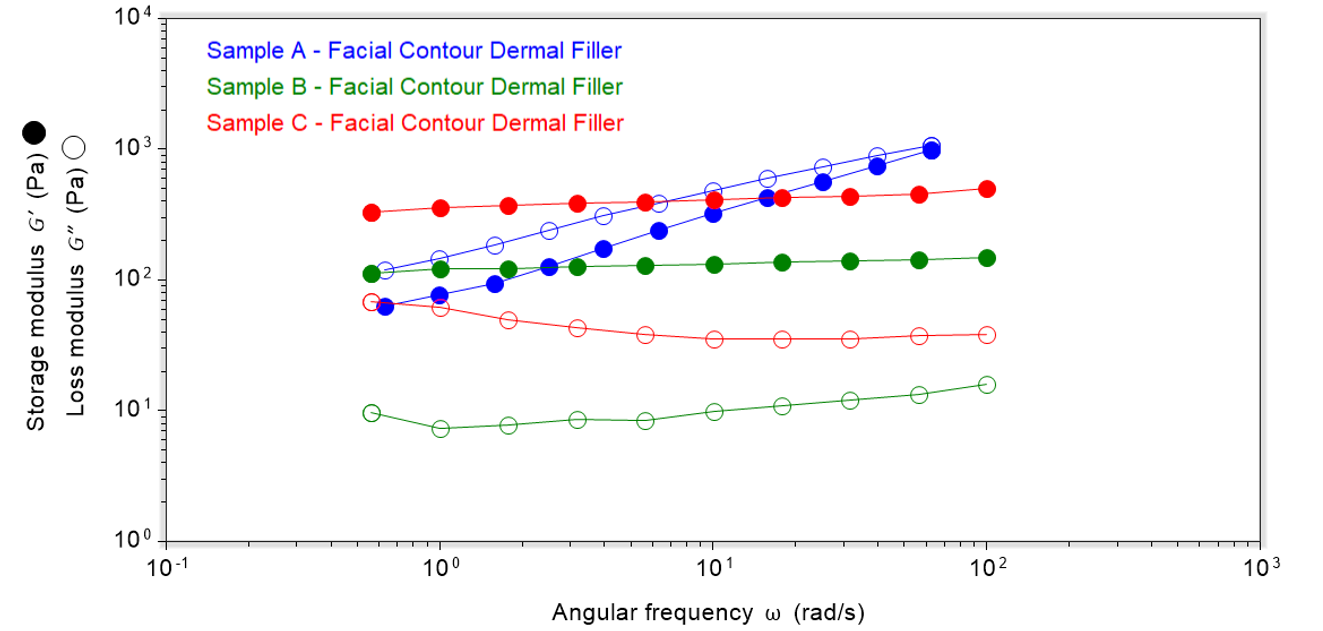
Figure 3 presents another oscillatory frequency sweep on three different facial contour dermal fillers. Although these fillers share the same intended application, the data revealed significant differences in their rheological behaviour, with several-fold differences in storage modulus.
Sample A displays viscous dominance across the frequency range, with a clear increase in modulus with increasing frequency. In contrast, samples B and C display elastic dominance with a relatively stable G’ across the tested frequency range.
Cohesion and Crosslinking of Dermal Fillers
Many dermal filler formulations rely on chemical crosslinking to impart many of the viscoelastic properties described above. The degree of crosslinking results in greater cohesion within the dermal filler and can be a great indication of several properties, such as spreadability and moldability. Cohesion can be measured in a few different ways. The level of cohesion is related to the storage modulus, where a lower storage modulus reflects greater cohesion.
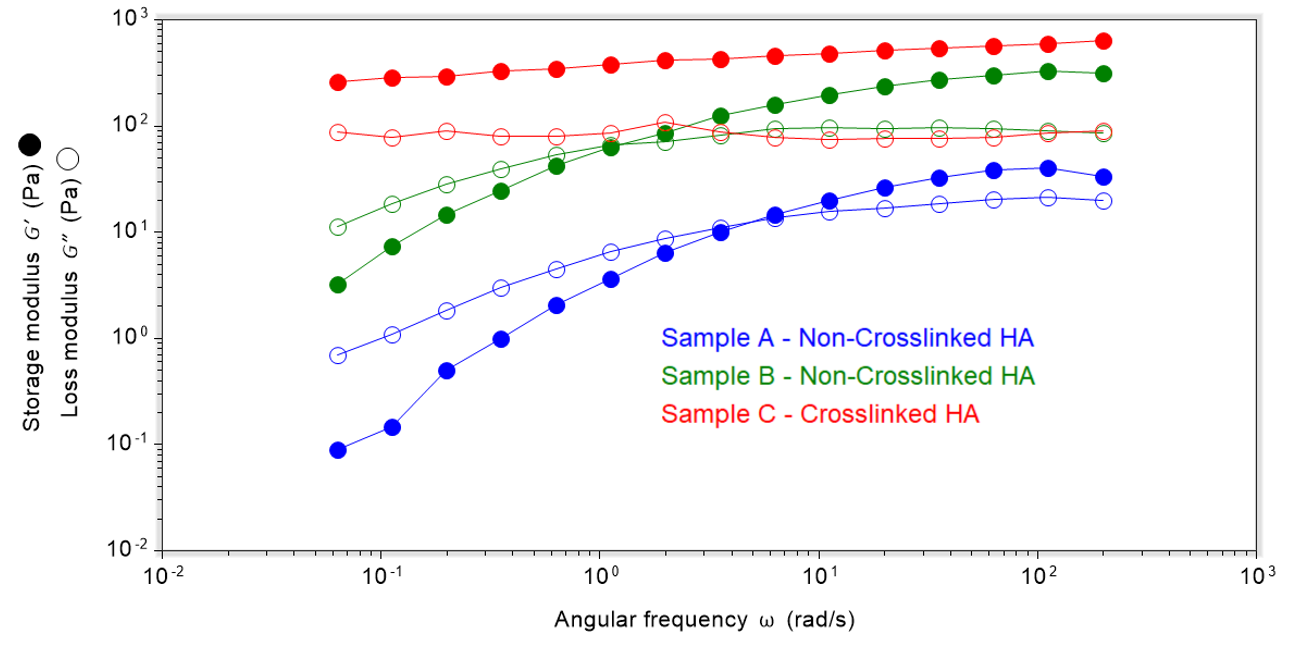
Figure 4 displays the viscoelastic behaviours of three generic hyaluronic acid (HA) formulations, comparing one chemically crosslinked sample with two non-crosslinked samples through an oscillation frequency sweep.
The crosslinked HA formulation consistently demonstrates a higher G’ than its non-crosslinked counterparts, indicating greater elasticity. Additionally, the crosslinked formulation maintains a G’ higher than its G’’ across the frequency range tested, confirming a predominantly elastic response. This is attributed to the denser polymer networks created by crosslinking.
The non-crosslinked fillers exhibit notably lower G’ values, particularly at low frequencies, highlighting their greater internal cohesiveness. This increased cohesion suggests that these fillers may hold together well and resist dispersion after injection.
The non-crosslinked fillers also show a pronounced increase in both G’ and G’’ with increasing frequency. Notably, they display a crossover frequency, where G’ surpasses G’’, indicating a transition from viscous-dominant to elastic-dominant behaviour under longer timescales of deformation. In contrast, the crosslinked filler maintains a relatively stable modulus across the frequency range, with no such crossover observed.
Summary
At the Centre for Industrial Rheology, we provide comprehensive rheological characterisation services tailored to the unique demands of dermal filler development. Our rheological methods enable a detailed understanding of how fillers respond under varying conditions, providing insights that are critical for optimising formulation performance and ensuring product consistency.
Whether you are looking to develop a new filler, benchmark against existing products, or perform batch-to-batch quality control, we offer rapid, economical access to expert rheological testing and analysis.
To learn more about additional characterisation methods for dermal fillers, read our article on Syringeability of Dermal Fillers. Do not hesitate to contact us to learn more about how we can support your dermal filler rheological needs.
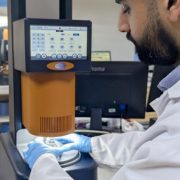
Related Articles;
Syringeability of Dermal Fillers
Rheology of Thermosensitive Injectable Polymer Hydrogels
Wasif Altaf serves as an Applications Specialist at the Centre for Industrial Rheology, leveraging a chemical engineering background (BEng) to bridge theory and practice. His work focuses on advanced rheological characterisation.
